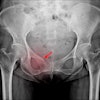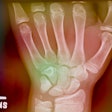Sunday, November 26 | 11:00 a.m.-12:30 p.m. | RCC11 | Room S501ABC
The topic of improving quality control of digital radiography (DR) through the analysis of reject rates will be discussed in this Sunday refresher course moderated by Kevin Little, PhD, a diagnostic medical physicist from Ohio State University Medical Center.Little will lead off the discussion with a talk on setting up a unified database for reject analysis of images from DR systems from multiple vendors. His presentation is based on work on reject analysis published in the Journal of the American College of Radiology in September 2016.
In that study, Little led a team at his previous institution, the University of Chicago, that found the institution's reject rate was higher than expected, at 24.5%. The researchers were able to cut the rate to 13% through the creation of a centralized database to which all DR images would be sent and that could be analyzed. They then created five standardized categories to describe why a DR image was rejected.
One of the problems they ran into, however, was that data output from DR systems wasn't standardized. This required manual intervention on the part of technologists. Little and Ingrid Reiser have been working on a new American Association of Physicists in Medicine (AAPM) task group, TG-305, to standardize how data on repeated and rejected x-rays are collected.
Little believes the database has been a useful tool for the university to manage reject rates, and he hopes the discussion at RSNA 2017 will inspire others to pursue their own work.
"The talk will hopefully alert some to the need to track repeat/reject rates in digital radiography and serve as a model for setting up their own framework," Little told AuntMinnie.com.



















